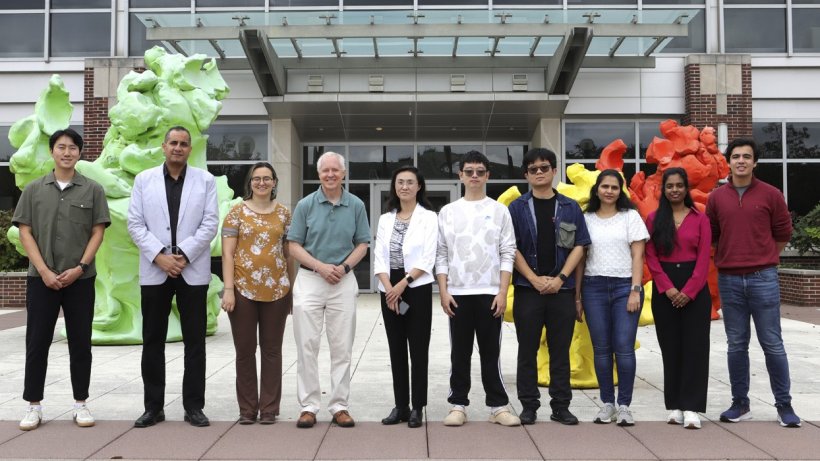 Foreign animal diseases are a global threat to swine production with the potential for detrimental economic implications. Recently, researchers at the University of Illinois Urbana-Champaign received a three-year grant of $650,000 from the U.S. Department of Agriculture to develop sensitive, rapid, low-cost, and portable point-of-use biosensors to improve on-farm detection and surveillance of African swine fever virus.
Foreign animal diseases are a global threat to swine production with the potential for detrimental economic implications. Recently, researchers at the University of Illinois Urbana-Champaign received a three-year grant of $650,000 from the U.S. Department of Agriculture to develop sensitive, rapid, low-cost, and portable point-of-use biosensors to improve on-farm detection and surveillance of African swine fever virus.
ASFV is a large DNA virus that infects swine and can result in a lethal hemorrhagic fever, spread rapidly to neighboring pigs, and cause excessive morbidity and mortality in swine populations. There currently is no effective vaccine or treatment for ASFV to help prevent infection and transmission. Further, detection of the virus is challenging because it relies on expensive offsite laboratory-based methods which often take too long for successful disease mitigation.

“ASFV is very important right now because it is already a deadly disease in other countries, and it can kill pigs quickly, usually within 7 to 10 days,” said Ying Fang (CGD/MMG), a professor of pathobiology in the College of Veterinary Medicine. “For field surveillance, if we have a portable device, we can take it to the field, and quickly detect ASFV-infected pigs. In this way, we can immediately apply the control and prevention measures.”
With her expertise in animal diseases, Fang teamed up with Brian Cunningham (CGD leader), the Intel Alumni Endowed Chair of Electrical and Computer Engineering, to develop a biosensor for ASFV. Cunningham’s research focuses on developing nanotechnology-based biosensors for cancer and infectious diseases.

“We have been working on these technology approaches for about ten years, continuously refining and improving the biosensors, but mainly for cancer and infectious human diseases. So, when this USDA grant funding opportunity came up, Professor Fang encouraged us to try for it,” Cunningham said.
The project funding began on September 1 of this year, with the grant support coming from the USDA National Institute of Food and Agriculture’s Nanotechnology for Agriculture and Food Systems program. Over the next three years, the team will work on using genomics and proteomics to determine the diagnostic targets, specific viral nucleic acid sequences and proteins, for ASFV detection. Then, Fang’s research group will use their expert knowledge to develop and test laboratory-based methods for ASFV detection using this target. These methods will then be incorporated into Cunningham’s portable cartridge devices that use novel physics principles and nanotechnology methods to detect the target molecules from the virus.
The work done at Illinois will focus on gene and protein level detection because research with live ASFV requires specialized facilities to eliminate exposure and transmission. To test their novel biosensor with active ASFV, Fang and Cunningham will collaborate with Jishu Shi, a professor of vaccine immunology at Kansas State University which houses the necessary biosafety level 3 facilities.
Overall, this grant represents a new portfolio of research for the Center for Genomic Diagnostics theme at the Carl R. Woese Institute for Genomic Biology. “We have been focused exclusively on human health and diseases and the underlying engineering science for sensing them. This represents how we have really strong pathobiology and veterinary medicine, combined with innovative engineering, here at Illinois. I think alone, neither of us would be able to do this project, but together, we make an excellent team,” Cunningham said.
“I hope this collaboration sends signals out university-wide that veterinary medicine is also important and an area that needs to be emphasized. So, I'm hoping to have more of this kind of collaboration and to continue developing new technologies to apply to livestock animals and veterinary medicine,” Fang said.
September 30, 2024 - University of Illinois Urbana-Champaign



